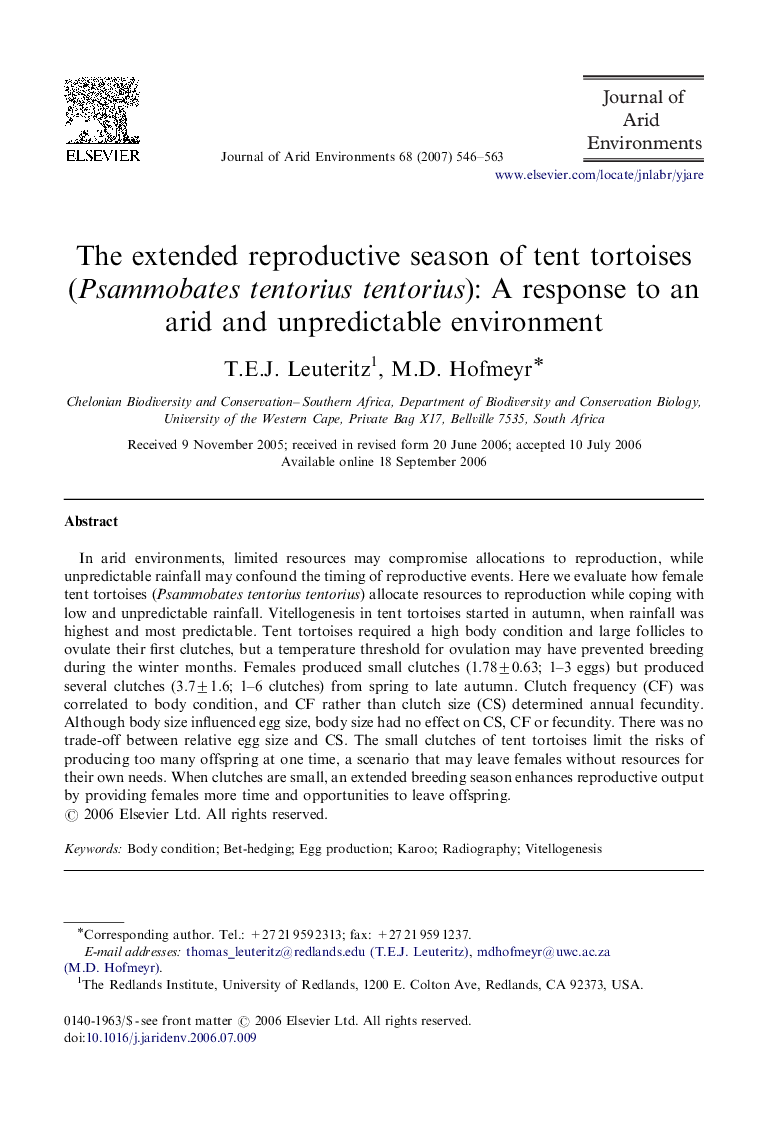| کد مقاله | کد نشریه | سال انتشار | مقاله انگلیسی | نسخه تمام متن |
|---|---|---|---|---|
| 4394665 | 1305550 | 2007 | 18 صفحه PDF | دانلود رایگان |

In arid environments, limited resources may compromise allocations to reproduction, while unpredictable rainfall may confound the timing of reproductive events. Here we evaluate how female tent tortoises (Psammobates tentorius tentorius) allocate resources to reproduction while coping with low and unpredictable rainfall. Vitellogenesis in tent tortoises started in autumn, when rainfall was highest and most predictable. Tent tortoises required a high body condition and large follicles to ovulate their first clutches, but a temperature threshold for ovulation may have prevented breeding during the winter months. Females produced small clutches (1.78±0.63; 1–3 eggs) but produced several clutches (3.7±1.6; 1–6 clutches) from spring to late autumn. Clutch frequency (CF) was correlated to body condition, and CF rather than clutch size (CS) determined annual fecundity. Although body size influenced egg size, body size had no effect on CS, CF or fecundity. There was no trade-off between relative egg size and CS. The small clutches of tent tortoises limit the risks of producing too many offspring at one time, a scenario that may leave females without resources for their own needs. When clutches are small, an extended breeding season enhances reproductive output by providing females more time and opportunities to leave offspring.
Journal: Journal of Arid Environments - Volume 68, Issue 4, March 2007, Pages 546–563